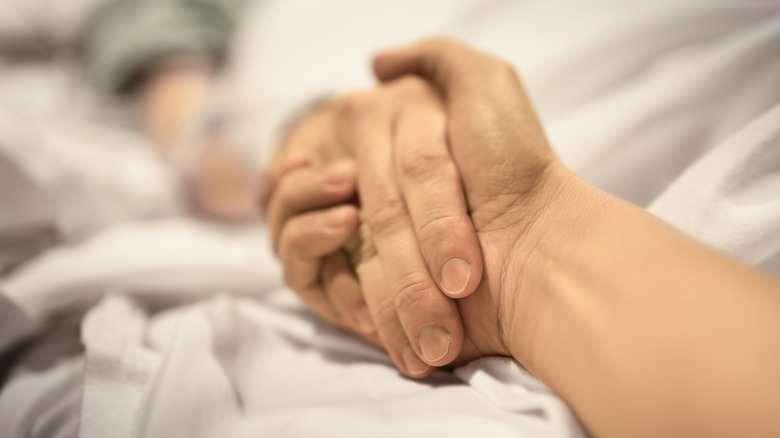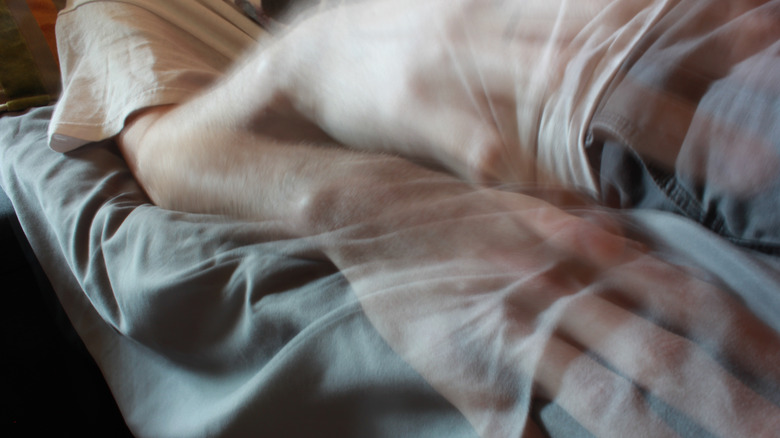The Chilling Phenomenon Of A Shared-Death Experience
Most are aware of the end-of-life phenomena called a near-death experience, in which those who've stood at the precipice of death but who are revived report (via Scientific American) seeing the proverbial light at the end of the tunnel, as well as feelings of bliss, and the sensation of leaving one's body. There are several leading theories that a near-death experience might be the mind's way of dealing with the trauma of death. Not so well known, though, are a kind of near-death experience called a shared-death experience (SDE).
As early as the 19th century, anecdotal evidence exists of SDEs, or the reported sensation of a caregiver or someone close to or nearby an individual who's dying having a similar experience in their own body at the moment of that person's passing. With "Shared Death Experiences: A Little-Known Type of End-of-Life Phenomena Reported by Caregivers and Loved Ones," published in 2021 by the journal, "American Journal of Hospice and Palliative Medicine," what might cause these shared-death experiences, and what they might be, have become the topic of serious scientific inquiry.
Shared-death experiences were once called death-bed visions
In the 19th century, shared-death experiences were called death-bed visions or death-bed coincidences by The Society for Psychical Research in London. One of the most well-known examples of an SDE happened in World War I to the German poet Karl Skala, as author Melvin Morse records in his 1995 book, "Parting Visions Uses and Meanings of Pre-death, Psychic, and Spiritual Experiences." In it, Morse writes that Skala remembered the sensation of leaving his body as his friend and fellow soldier died in his arms.
Skala also recalled looking down and seeing himself holding his departed friend before Skala returned to his body, uninjured. CNN reports that some researchers theorize that near-death experience might be caused by anoxia, or what the brain goes through as it loses oxygen in the process of dying, or even perhaps anesthesia. No such explanation fits the shared-death experience, though some theorize they might come about in the person witnessing a person die as a response to trauma and grief. However, SDEs have been reported by those thousands of miles away from their loved ones at the moment of their passing.
SDEs are not always 'blissful'
Moreover, shared-death experiences aren't always as peaceful and comforting as near-death experiences are claimed to be. One woman who separated from her mother at the time her mother died reported a feeling of suffocation. However, most SDEs appear to be peaceful. One reported shared-death experience (via Guideposts) happened as a man flew on a plane. He experienced guiding his father toward a light and didn't realize his father died until the plane landed. One woman recalled traveling with her dying husband to the metaphorical doorstep of heaven, where she handed him over to his departed mother.
Anything related to the afterlife is naturally met with skepticism. But on the topic of SDEs, psychotherapist William Peters said (via Guideposts), "Some dismiss NDEs as just the body's biological response to physical trauma ... But for SDEs, this is a mystical experience happening to a healthy person. And there are so many commonalities in firsthand accounts of NDEs and SDEs, it has to be more than a coincidence." Shared-death experiences, Peters added, are a " ... dynamic experience ... We are being allowed to witness a journey from this human life into what lies beyond."


